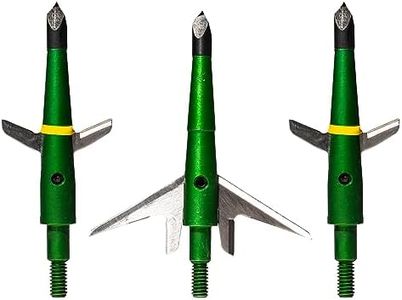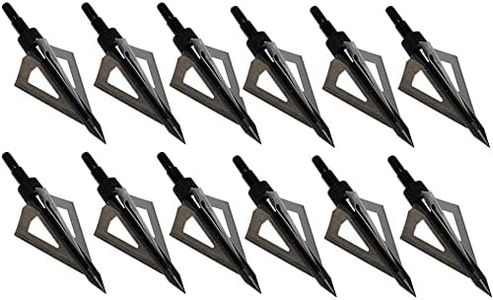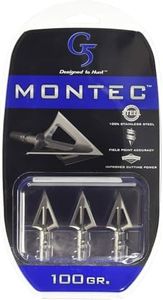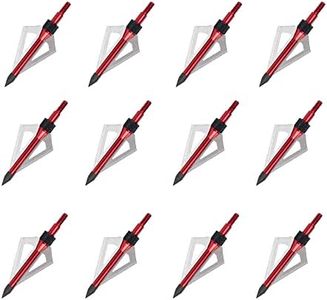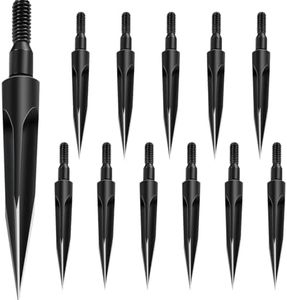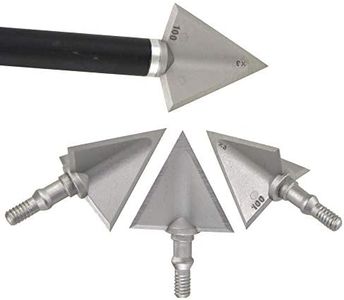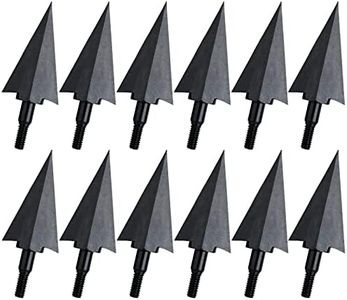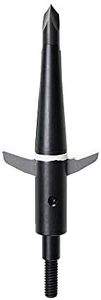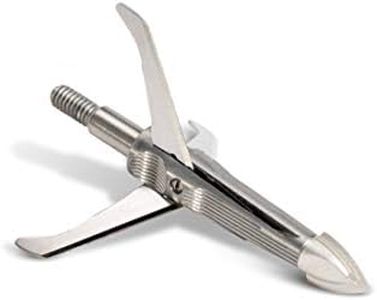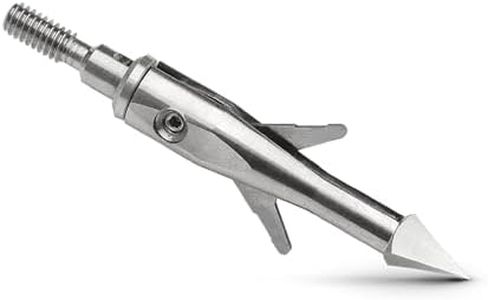We Use CookiesWe use cookies to enhance the security, performance,
functionality and for analytical and promotional activities. By continuing to browse this site you
are agreeing to our privacy policy
10 Best broadheads
From leading brands and best sellers available on the web.Buying Guide for the Best broadheads
When choosing broadheads for archery or bowhunting, you're picking the tip that determines how your arrow performs when it hits its target. It's important to match your broadhead to both your type of archery setup and your hunting goals. Different designs excel for different needs, such as penetration, cutting diameter, and flight accuracy. Knowing the key specs and what they mean will help you find a broadhead that works best for your style, your equipment, and your intended game.Blade TypeBlade type refers to the design of the broadhead's cutting edges, and is usually divided into two main groups: fixed-blade and mechanical (expandable) broadheads. Fixed-blade broadheads have non-moving blades that are always ready to cut, offering durability and simple design, which are great for tough animals and traditional bows. Mechanical broadheads have blades that stay tucked in flight and expand on impact, creating larger wound channels and offering better flight accuracy, especially at longer distances, but they can be more affected by mechanical failure and are best suited for higher-poundage bows. Consider fixed blades if you want reliability and often hunt larger animals; choose mechanical if you prioritize accuracy and hunt medium-sized game.
Number of BladesThis specifies how many separate blades are on the broadhead. Common numbers are two, three, or four blades. More blades usually mean a larger wound channel and potentially faster blood loss, but can slightly reduce penetration due to more resistance. Fewer blades (like two) can help with deeper penetration, especially on tough animals. Choose fewer blades if you hunt heavier, thicker-skinned game or want easier arrow tuning; pick more blades for increased cutting ability on smaller to medium game.
Cutting DiameterThe cutting diameter is the width of the hole the broadhead creates as it passes through the target. Diameters usually range from about 1 inch to over 2 inches. A larger cutting diameter increases the likelihood of hitting vitals and causes greater tissue damage, resulting in a quicker kill, but might reduce penetration on larger game. A smaller cutting diameter penetrates deeper but causes a narrower wound channel. Before choosing, consider the type of game you hunt: smaller cutting diameters for tough or large animals, wider diameters for deer-sized or smaller targets where penetration is less of an issue.
WeightBroadheads come in different weights, commonly measured in grains (such as 100-grain, 125-grain, or 150-grain). Heavier broadheads can improve penetration and momentum but may require you to adjust your arrow setup for proper flight. Lighter broadheads are often better for higher speed and flatter trajectory shots. Match the broadhead weight to the arrows and draw weight your bow is designed for, and consider heavier weights if you need extra penetration on larger game.
MaterialBroadheads are made from various materials like stainless steel, carbon steel, or aluminum. Stainless steel resists rust and holds an edge well, making it good for durability and long-term use. Carbon steel can be sharper but may need more care to prevent rust. Aluminum is lightweight but might not be as durable. If you're hunting in wet, challenging conditions or want long-lasting gear, go for stainless steel. For an extra sharp edge and lighter weight, consider carbon steel or aluminum, but treat them carefully.

